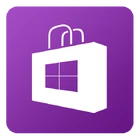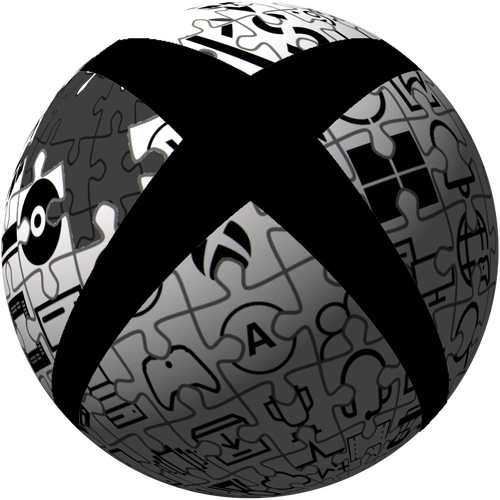
Windows Phone (WP) is a discontinued family of mobile operating systems developed by Microsoft for smartphones as the replacement successor to Windows Mobile and Zune. Windows Phone featured a new user interface derived from the Metro design language. Unlike Windows Mobile, it was primarily aimed at the consumer market rather than the enterprise market.
It was first launched in October 2010 with Windows Phone 7. Windows Phone 8 succeeded it in 2012, replacing the Windows CE-based kernel of
Windows Phone 7 with the Windows NT kernel used by the PC versions of Windows (and, in particular, a large amount of internal components from Windows 8). Due to these changes, the OS was incompatible with all existing Windows Phone 7 devices, although it still supported apps originally developed for Windows Phone 7. In 2014, Microsoft released the Windows Phone 8.1 update, which introduced the Cortana virtual assistant, and Windows Runtime platform support to create cross-platform apps between Windows PCs and Windows Phone.

In 2015, Microsoft released Windows 10 Mobile, which promoted increased integration and unification with its PC counterpart, including the ability to connect devices to an external display or docking station to display a PC-like interface. Although Microsoft dropped the Windows Phone brand at this time in order to focus more on synergies with Windows 10 for PCs, it was still a continuation of the Windows Phone line from a technical standpoint, and updates were issued for selected Windows Phone 8.1 devices.
While Microsoft's investments in the platform were headlined by a major partnership with Nokia (whose Lumia series of smartphones, including the Lumia 520 in particular, would represent the majority of Windows Phone devices sold by 2013) and Microsoft's eventual acquisition of the company's mobile device business for just over US$7 billion (which included Nokia's then-CEO Stephen Elop joining Microsoft to lead its in-house mobile division), the duopoly of Android and iPhone remained the dominant platforms for smartphones, and interest in Windows Phone from app developers began to diminish by mid-decade. Microsoft laid off the Microsoft Mobile staff in 2016, after having taken a write-off of $7.6 billion on the acquired Nokia hardware assets, while market share sunk to 1% that year. Microsoft began to prioritize software development and integrations with Android and iOS instead, and ceased active development of Windows 10 Mobile in 2017.
History[]
Development[]
Work on a major Windows Mobile update may have begun as early as 2004 under the codename "Photon", but work moved slowly and the project was ultimately cancelled. In 2008, Microsoft reorganized the Windows Mobile group and started work on a new mobile operating system. The product was to be released in 2009 as Windows Phone, but several delays prompted Microsoft to develop Windows Mobile 6.5 as an interim release.
Following this, Windows Phone was developed quickly. One result was that the new OS would not be compatible with Windows Mobile applications. Larry Lieberman, senior product manager for Microsoft's Mobile Developer Experience, told eWeek: "If we'd had more time and resources, we may have been able to do something in terms of backward compatibility." Lieberman said that Microsoft was attempting to look at the mobile phone market in a new way, with the end user in mind as well as the enterprise network. Terry Myerson, corporate VP of Windows Phone engineering, said, "With the move to capacitive touch screens, away from the stylus, and the moves to some of the hardware choices we made for the Windows Phone 7 experience, we had to break application compatibility with Windows Mobile 6.5."
From the beginning of Windows Phone until at least 2015, Joe Belfiore was the head of development and the face of the platform's initiatives.
Partnership with Nokia[]
On February 11, 2011, at a press event in London, Microsoft CEO Steve Ballmer and Nokia CEO Stephen Elop announced a partnership between their companies in which Windows Phone would become the primary smartphone operating-system for Nokia, replacing Symbian. The event focused largely on setting up "a new global mobile ecosystem", suggesting competition with Android and iOS with the words "It is now a three horse race". Elop stated the reason for choosing Windows Phone over Android, saying: "the single most important word is 'differentiation'. Entering the Android environment late, we knew we would have a hard time differentiating." While Nokia would have had more long-term creative control with Android (note that MeeGo as used by Nokia resembles Android more than it does Windows Phone 7 as both Android and MeeGo are based on the Linux kernel), Elop enjoyed familiarity with his past company where he had been a top executive.
The pair announced integration of Microsoft services with Nokia's own services; specifically:
- Bing would power search across Nokia devices
- integration of Nokia Maps with Bing Maps
- integration of Nokia's Ovi store with the Windows Phone Store
The partnership involves "funds changing hands for royalties, marketing and ad-revenue sharing", which Microsoft later announced as "measured in billions of dollars." Jo Harlow, whom Elop tapped to run Nokia's smartphone business, rearranged her team to match the structure led by Microsoft's VP of Windows Phone, Terry Myerson. Myerson was quoted as saying, "I can trust her with what she tells me. She uses that same direct and genuine communication to motivate her team."
The first Nokia Lumia Windows Phones, the Lumia 800 and Lumia 710, were announced in October 2011 at Nokia World 2011.
At the Consumer Electronics Show in 2012 Nokia announced the Lumia 900, featuring a 4.3-inch AMOLED ClearBlack display, a 1.4 GHz processor and 16 GB of storage. The Lumia 900 was one of the first Windows Phones to support LTE and was released on AT&T on April 8. An international version launched in Q2 2012, with a UK launch in May 2012. The Lumia 610 was the first Nokia Windows Phone to run the Tango Variant (Windows Phone 7.5 Refresh) and was aimed at emerging markets.
On September 2, 2013, Microsoft announced a deal to acquire Nokia's mobile phone division outright, retaining former CEO Stephen Elop as the head of Microsoft's devices operation. The merger was completed after regulatory approval in all major markets in April 2014. As a result, Nokia's hardware division became a subsidiary of Microsoft operating under the name Microsoft Mobile.
In February 2014, Nokia released the Nokia X series of smartphones, (later discontinued) using a version of Android forked from the Android Open Source Project. The operating system was modified; Google's software was not included in favour of competing applications and services from Microsoft and Nokia, and with a user interface highly modified to resemble Windows Phone.
Versions[]
Windows Phone 7[]

Windows Phone 7.5 logo
Windows Phone 7 was announced at Mobile World Congress in Barcelona, Catalonia, Spain, on February 15, 2010, and released publicly on November 8, 2010 in the United States.
In 2011, Microsoft released Windows Phone 7.5 Mango. The update included a mobile version of Internet Explorer 9 that supports the same web standards and graphical capability as the desktop version, multi-tasking of third-party apps, Twitter integration for the People Hub, and Windows Live SkyDrive access. A minor update released in 2012 known as "Tango", along with other bug fixes, lowered the hardware requirements to allow for devices with 800 MHz CPUs and 256 MB of RAM to run Windows Phone.
Windows Phone 7 devices can not be upgraded to Windows Phone 8 due to hardware limitations. Windows Phone 7.8 was released as a stopgap update in 2013 to include some of the user interface features from Windows Phone 8.
Windows Phone 8[]

Windows Phone 8 logo was hit in oct of 2012
On October 29, 2012, Microsoft released Windows Phone 8, a new generation of the operating system. Windows Phone 8 replaced its previously Windows CE-based architecture with one based on the Windows NT kernel with many components shared with Windows 8.
Windows Phone 8.1[]
Windows Phone 8.1 was announced on April 2, 2014, after being released in preview form to developers on April 10, 2014. New features added include a notification center, support for the Internet Explorer 11 web browser, with tab syncing among Windows 8.1 devices, separate volume controls, and the option to skin and add a third column of live tiles to the Start Screen. Starting with this release, Microsoft dropped the requirement that all Windows Phone OEMs include a camera button and physical buttons for back, Start, and Search.

Windows Phone 8.1 logo was hit on 2014
Windows Phone 8.1 introduced Cortana, a voice assistant similar to Siri and Google Now. Cortana replaced the previous Bing search feature, and was released as a beta in the United States in the first half of 2014, before expanding to other countries in early 2015.
Windows 10 Mobile[]
Windows 10 Mobile was announced on January 21, 2015, as a mobile operating system for smartphones and tablets running on ARM architecture. Its primary focus is unification with Windows 10, its PC counterpart, in software and services; in accordance with this strategy, the Windows Phone name has been phased out in favor of branding the platform as an edition of Windows 10, although it is still a continuation of Windows Phone, and most Windows Phone 8.1 devices can be upgraded to the platform.
Windows 10 Mobile emphasized software using the Universal Windows Platform (UWP), which allowed apps to be designed for use across multiple Windows 10-based product families with nearly identical code, functionality, and adaptations for available input methods. When connected to an external display, devices could also render a stripped-down desktop interface similar to Windows on PCs, with support for keyboard and mouse input. Windows 10 Mobile featured Skype message integration, updated Office Mobile apps, notification syncing with other Windows 10 devices, support for the Microsoft Edge web browser, and other user interface improvements. Microsoft developed a middleware known as Windows Bridge to allow iOS Objective-C and Android C++ or Java software to be ported to run on Windows 10 Mobile with limited changes to code.
With the diminishing interest and application development for the platform, Microsoft discontinued active development of Windows 10 Mobile in 2017, and the platform was declared end of life on January 14, 2020.
Games[]

The "Games hub" provides access to games on a phone along with Xbox Live functionality, including the ability for a user to interact with their avatar, view and edit their profile, see their achievements and view leaderboards, and send messages to friends on Xbox Live. The hub also features an area for managing invitations and turn notifications in turn-based multiplayer games. Games are downloaded from Windows Phone Store.
